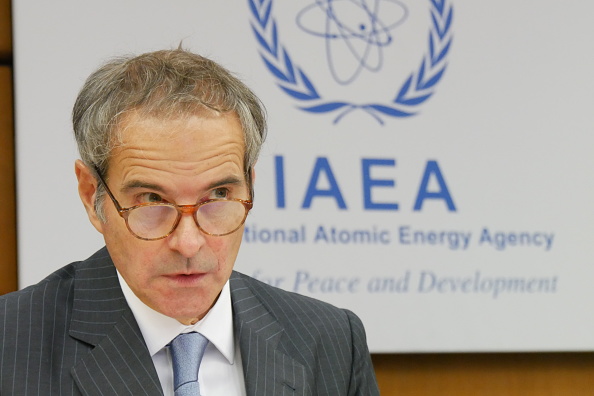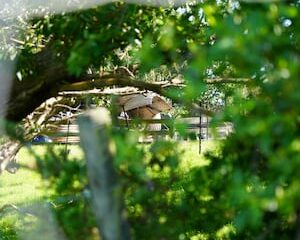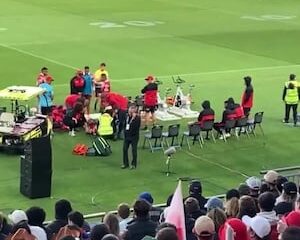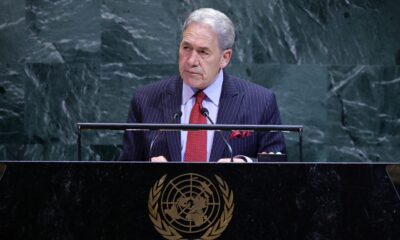Politics
Iran Demolishes Nuclear Site Buildings Amid Suspicion of Evidence Removal

Iran has commenced a significant demolition effort at the Mojdeh site, also known as Lavisan II, which has raised concerns regarding the potential removal of evidence related to its nuclear research activities. According to the Institute for Science and International Security, satellite imagery indicates that Iran is rapidly demolishing buildings that were damaged or destroyed in recent airstrikes, likely in an attempt to sanitize the site of any incriminating material.
Details Surrounding the Demolition Efforts
The Institute for Science and International Security, an independent research group led by former UN nuclear inspector David Albright, reported that the demolitions may be part of a strategy to eliminate traces of nuclear weapons research and development. Iran’s embassy to the United Nations did not respond to requests for comment regarding these activities. Tehran has consistently maintained that its nuclear program is intended for peaceful purposes.
The report on the Mojdeh site comes as the International Atomic Energy Agency (IAEA) engages in negotiations in Tehran to resume inspections that have been disrupted due to heightened tensions following military actions in the region. These include the June 13-24 conflict between Israel and Iran, as well as subsequent US airstrikes on Iranian nuclear facilities.
In response to Iran’s nuclear activities, Britain, France, and Germany are reportedly preparing to initiate the process of re-imposing UN sanctions against Iran for breaches of the 2015 nuclear agreement, which aims to prevent the nation from developing nuclear weapons. Four diplomats confirmed this development.
IAEA’s Stance and Inspection Obligations
Rafael Grossi, the head of the IAEA, emphasized the importance of resuming inspections, stating that Iran is legally obligated to allow IAEA access to its nuclear facilities. Grossi highlighted the agency’s intent to inspect all relevant sites, including Fordow, Natanz, and Isfahan, to account for Iran’s stockpile of over 400 kg (approximately 882 pounds) of uranium enriched to near weapons-grade purity.
The Mojdeh site has been under scrutiny following two Israeli airstrikes on June 18, which damaged multiple buildings associated with Iran’s nuclear program. The IAEA has established connections between the site and the AMAD Plan, a nuclear weapons development initiative that US intelligence agencies concluded was terminated in 2003. The first strike impacted structures linked to the Institute of Applied Physics and a building associated with the Shahid Karimi Group, a US-sanctioned entity involved in missile and explosives development.
The second strike reportedly destroyed the Institute of Applied Physics building and caused damage to a security facility. Recent satellite images from Maxar Technologies show that by July 3, clean-up efforts were underway, and by August 19, the Applied Physics building and workshop had been completely demolished, as had the structure linked to the Shahid Karimi Group.
The rapid pace of these demolitions raises concerns that Iran is attempting to obscure any evidence of its nuclear-related activities, limiting the potential for future inspections to uncover significant information regarding its nuclear ambitions.
-

 World1 week ago
World1 week agoPrivate Funeral Held for Dean Field and His Three Children
-

 Top Stories2 weeks ago
Top Stories2 weeks agoFuneral Planned for Field Siblings After Tragic House Fire
-

 Sports3 months ago
Sports3 months agoNetball New Zealand Stands Down Dame Noeline Taurua for Series
-

 Entertainment3 months ago
Entertainment3 months agoTributes Pour In for Lachlan Rofe, Reality Star, Dead at 47
-

 Entertainment2 months ago
Entertainment2 months agoNew ‘Maverick’ Chaser Joins Beat the Chasers Season Finale
-

 Sports3 months ago
Sports3 months agoSilver Ferns Legend Laura Langman Criticizes Team’s Attitude
-

 Sports4 weeks ago
Sports4 weeks agoEli Katoa Rushed to Hospital After Sideline Incident During Match
-

 World2 weeks ago
World2 weeks agoInvestigation Underway in Tragic Sanson House Fire Involving Family
-

 Politics2 months ago
Politics2 months agoNetball NZ Calls for Respect Amid Dame Taurua’s Standoff
-

 Top Stories2 weeks ago
Top Stories2 weeks agoShock and Grief Follow Tragic Family Deaths in New Zealand
-

 Entertainment3 months ago
Entertainment3 months agoKhloe Kardashian Embraces Innovative Stem Cell Therapy in Mexico
-

 World4 months ago
World4 months agoPolice Arrest Multiple Individuals During Funeral for Zain Taikato-Fox





















